2022 Ford Ranger Raptor review
Words: Kyle Cassidy | Photos: Tom Gasnier
Ford’s Ranger Raptor returns for more high-flying high jinks. Now with twin-turbo V6 power, it soars to new heights.
The Raptor proved a hit when it was introduced with the previous generation Ranger. Leveraging the concept of the larger F-150 Raptor, the ‘desert racer’ theme was adopted for the smaller pick-up. While it was never part of the original design brief for the old Ranger, this new generation of truck was designed with Raptor in mind and so it’s part of the line-up from the get go. And many of the improvements made to the base model were implemented to help make the Raptor even better. So from an improved base model springs an even more capable off-road machine.
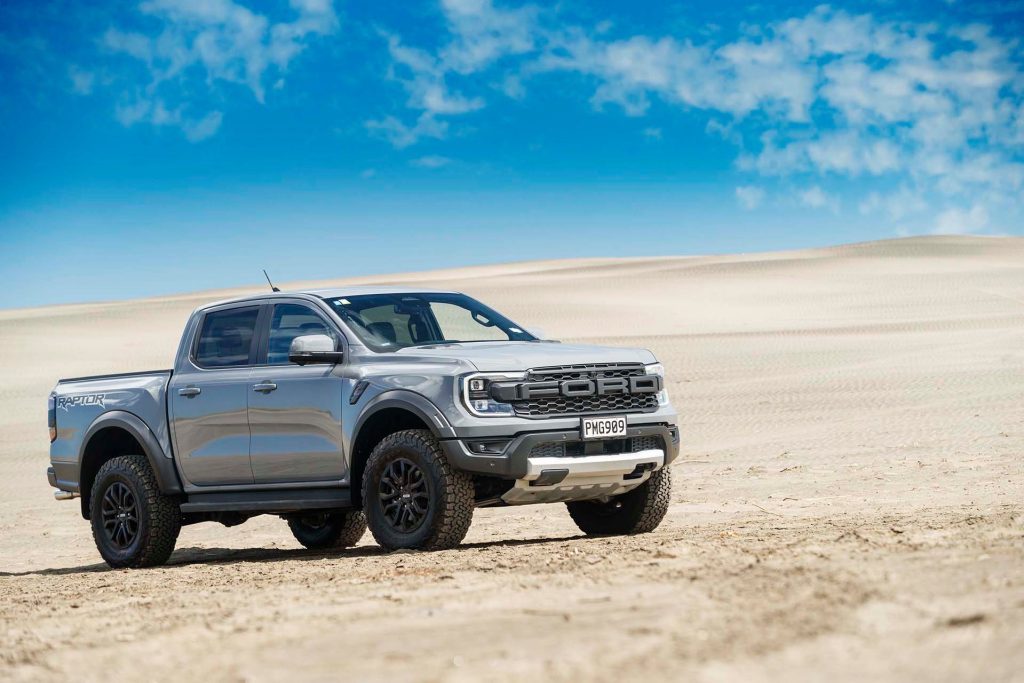
What’s a Raptor then?
A quick recap as we’ve detailed the Raptor previously. It gets unique suspension with forged alloy arms up front and a coil sprung rear end with trailing arms and a Watt’s link. The chassis and body are reinforced in key areas to withstand off-road abuse. Those famous Fox shockers return (with Teflon-infused oil for a silkier action!) and are now adaptive in nature with three selectable modes (Normal, Sport and Off-Road). Speaking of modes, the Baja setting is back, along with Sport and various Off-Road functions. The steering rack is Raptor-specific while the 17-inch wheels and big BF Goodrich rubber return along with plenty of underbody protection and tow hooks (to help recover lesser vehicles).
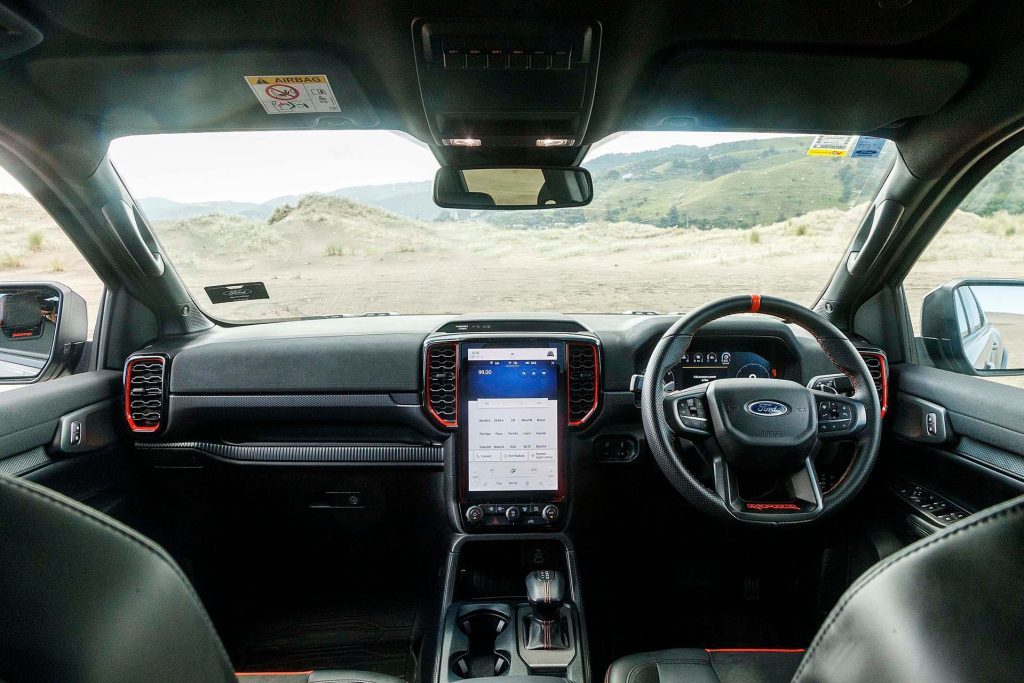
The 157kW/500Nm four-pot diesel is out and a new 3.0-litre twin-turbo petrol V6 is in, bolstering output to 292kW and 583Nm (when guzzling 98 octane, that is). The ten-speed auto is an upgraded unit while the 4×4 system is new with 2H, 4H and an on-demand type AWD setting. There’s 4L too and front and rear diff lockers.
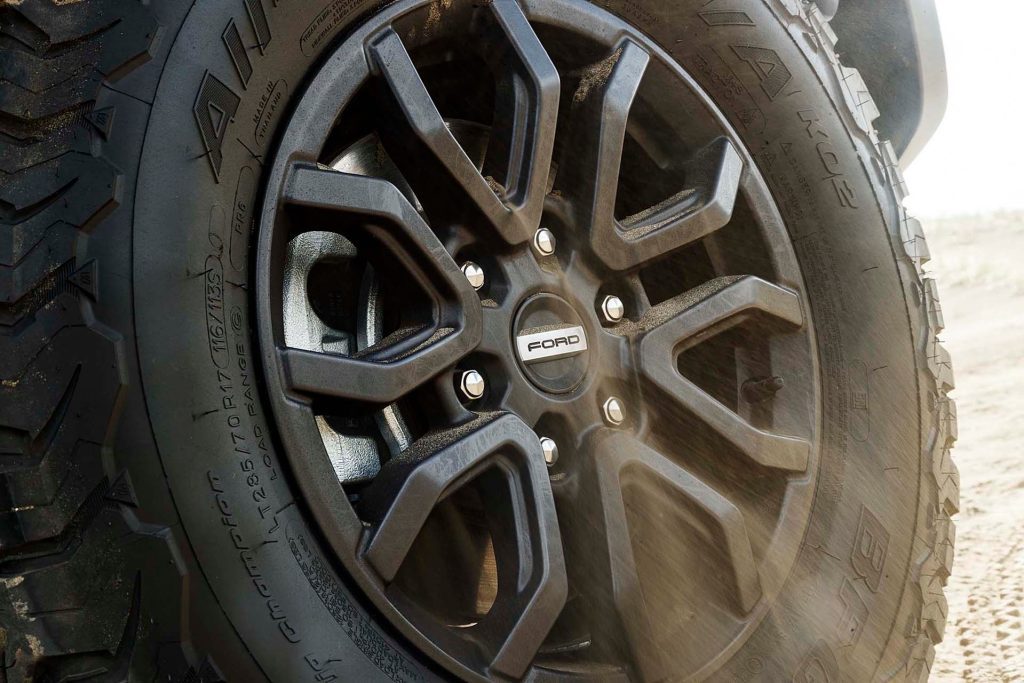
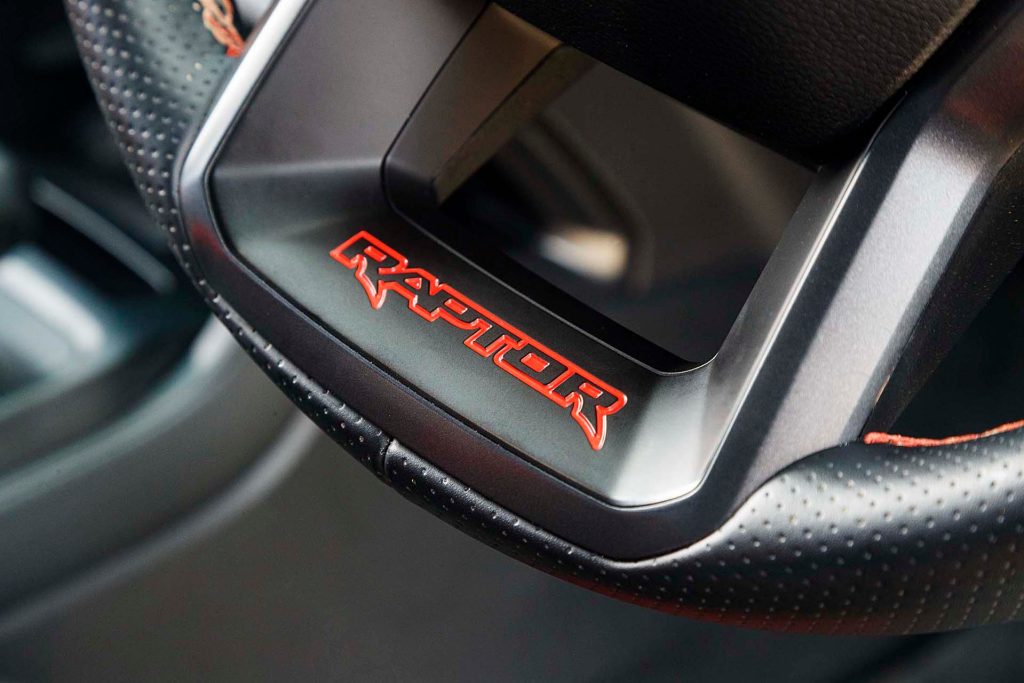
Previously, the Raptor was a standout with its pumped guards bulging like Hulk’s biceps. But now that the base truck is more macho, the transformation from Dr Banner to angry green guy isn’t quite as exaggerated. Still the cues are there; wider guards, added ride height, the big FORD grille, off road side steps etc. As before, its tow rating is reduced to 2.5 tonnes, and the payload is down to 655kg.
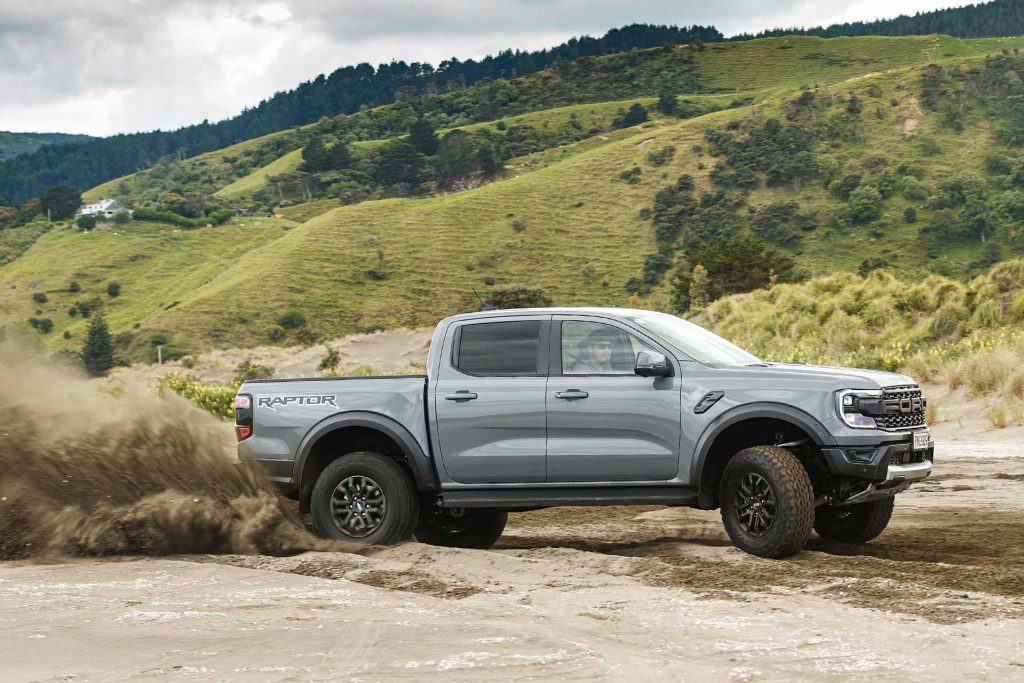
The original cost $84,990, and this new one initially listed at $89,990, but recently rose to $92,990 and is subject to the full whack of $5175 CO2 fees. It could potentially rise again as the Clean Car Standard is enacted. There’s a waiting list too; orders placed now won’t be filled until at least July.
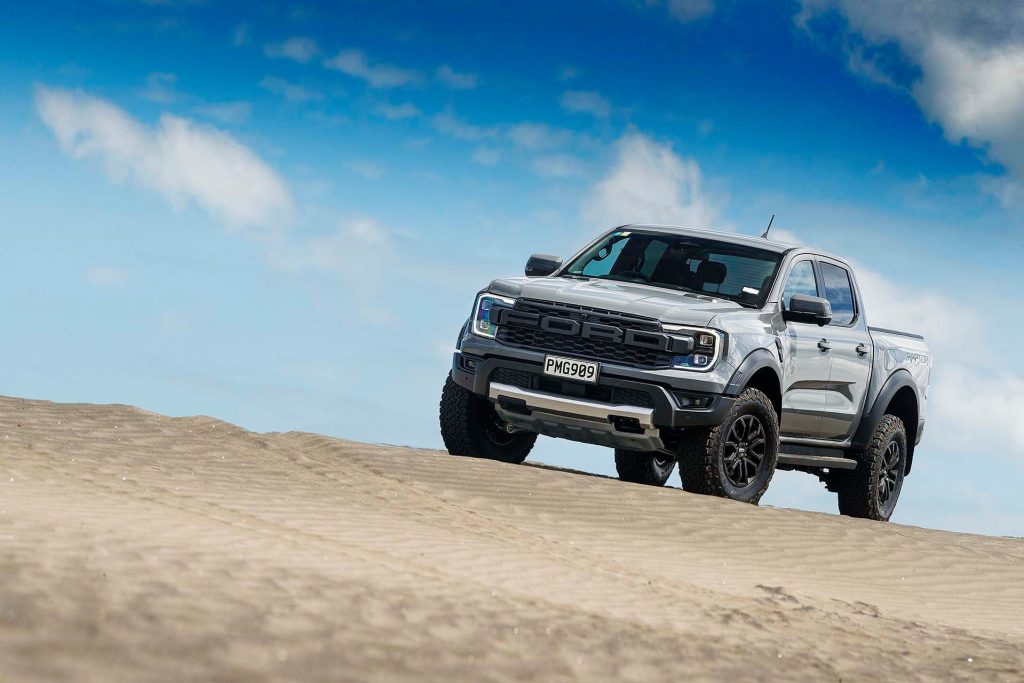
A blast on road
While it’s engineered to romp through the desert, it’s terrific on tarmac too. This new powertrain is a better fit for Raptor. The diesel never really challenged the chassis, whereas now the drive is much more invigorating. You arrive at the corners that bit quicker, and so you can overcook your entry speed if you’re not paying attention. Push too hard on the exit and you’ll be forcing the issue with the front tyres. The steering feel is solid though and with a well telegraphed progression towards the limits you know how hard you can push. The steering isn’t particularly quick, but it does start turning the moment you ask it too, no rack slop here, nor any kickback over the nasty bits. It has three settings from Comfort to Sport via a button on the wheel, the latter adding just the right amount of heft for faster cornering.
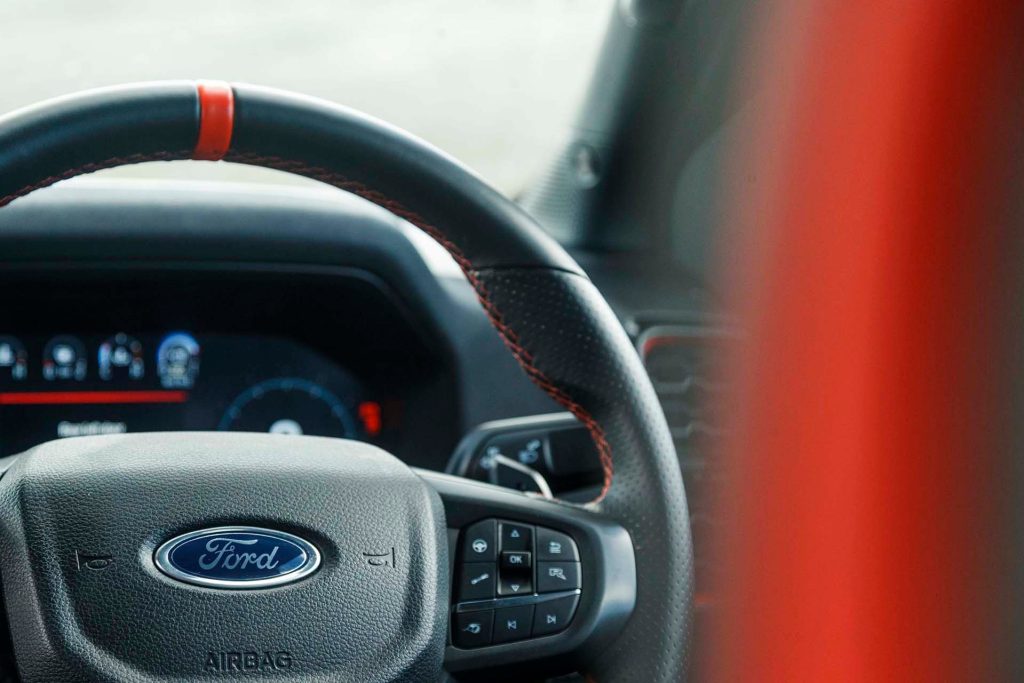
Another button tunes the dampers, Sport firming their action to subtract a few degrees of body roll and sharpen the response to commands. Yet it still rides well. We rounded one bend to find a pot canyon (it was much larger than a hole) laying in wait on the corner exit. It probably would have destroyed the alloy of a lower riding performance car but Raptor shrugged it off, the front end merely shimmying a little wider, the rear completely unperturbed. Bump steer just really isn’t part of this pick-up’s character.
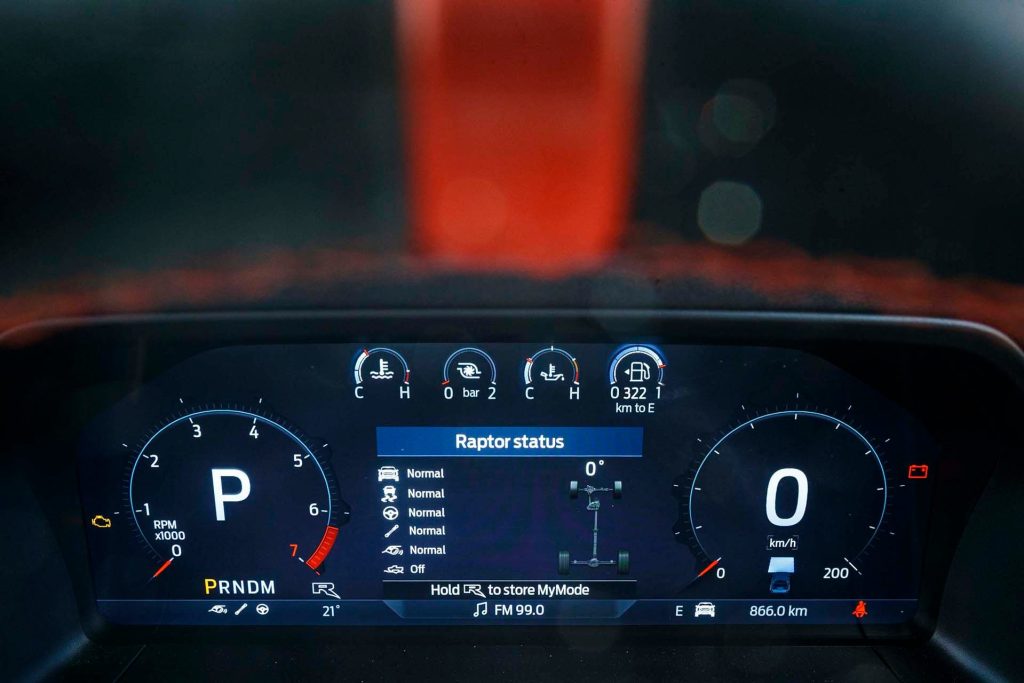
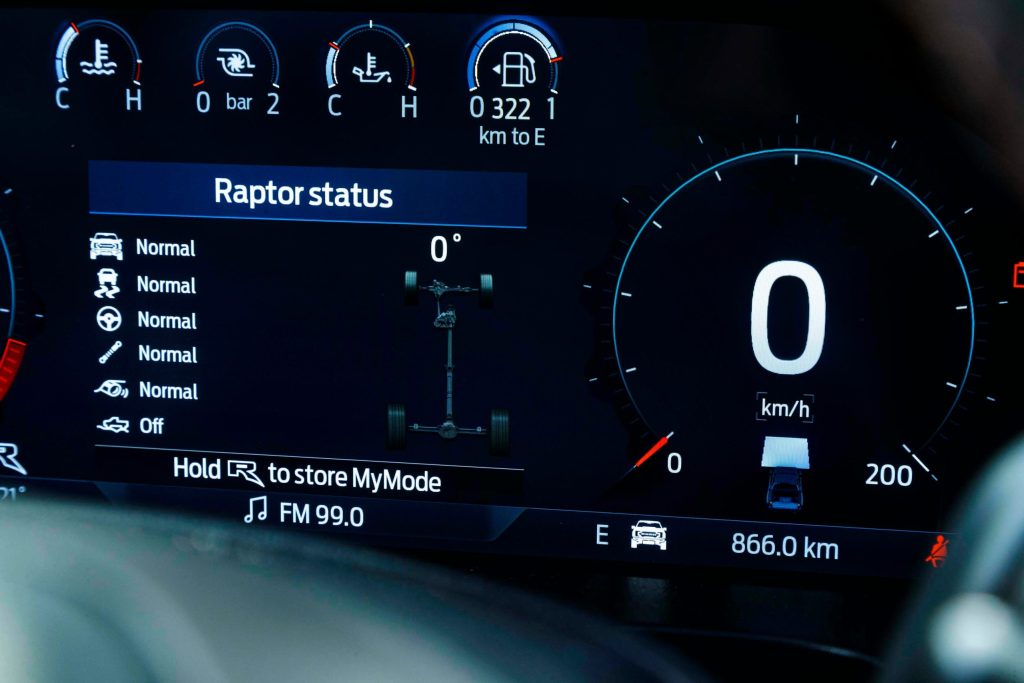
The 10-speed shifts with its usual slick nature, the flow of power barely interrupted. Its behaviour in Sport mode is smart, holding gears when you lift and dropping a couple when you hit the brakes. Pin the gas and it will spin the V6 towards its 6500rpm red zone but accelerate in a mild manner and it will upshift early to milk that midrange. In Baja mode, the response is sharpened by the anti-lag system, which keeps the engine on the boil during momentary throttle lifts. It’s possibly too sharp, which is why it’s reserved for the ‘off road race mode’.
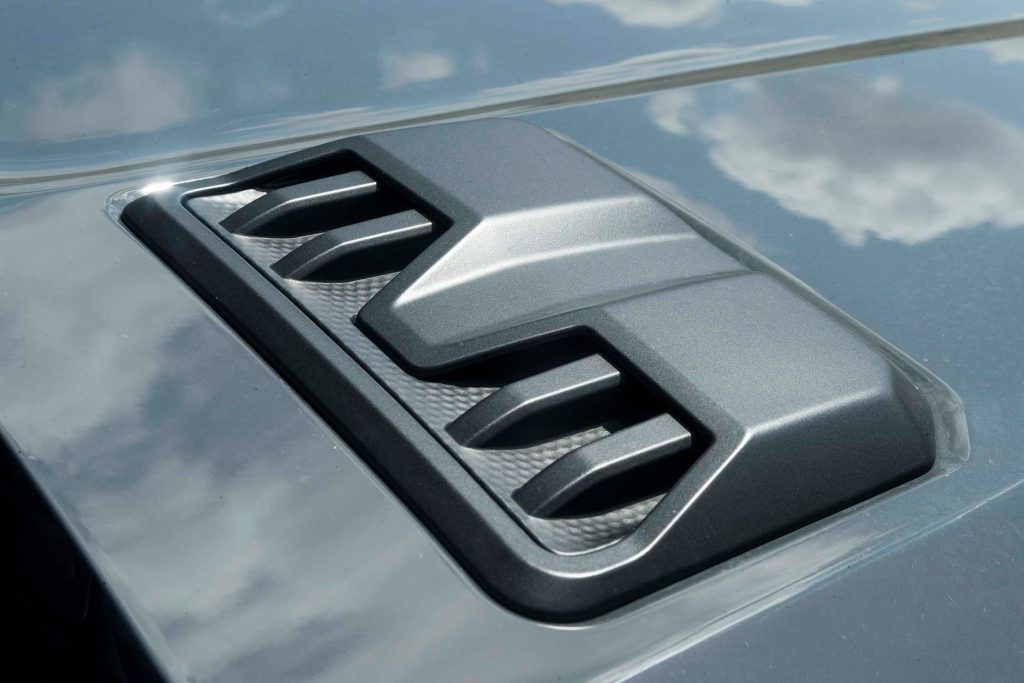
The brake pedal is good too with its progressive action. Tap the stoppers lightly and you can brush off a bit of speed before a bend, while pressing harder initiates more bite. The pedal does get longer as you work them more, and the panic stop isn’t the best ever, but that’s big off road tyres for you.
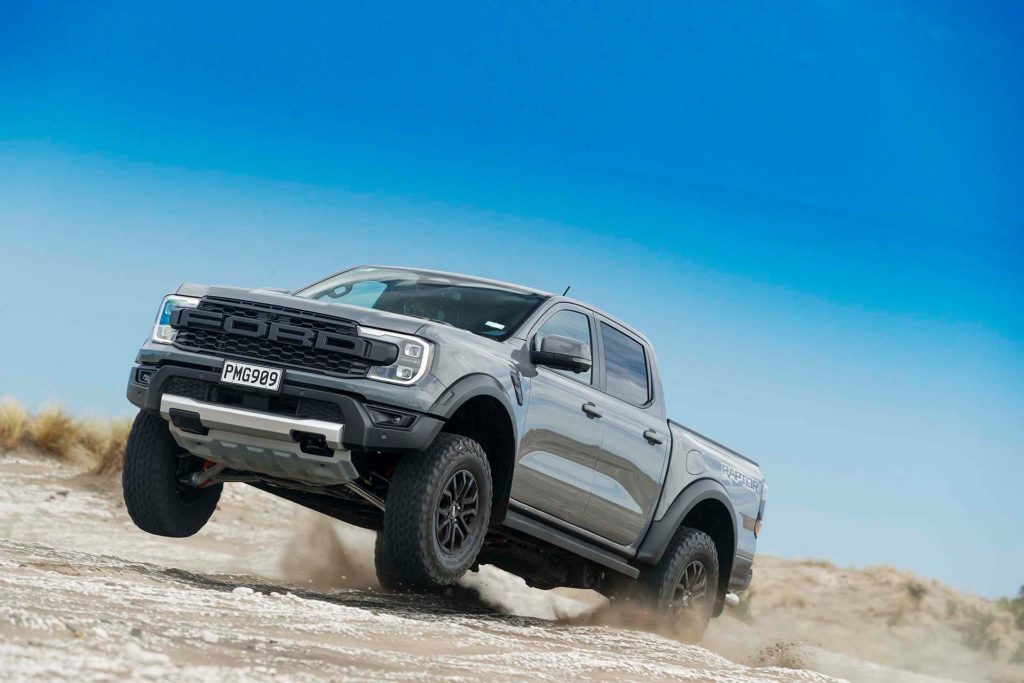
The valved exhaust system is all sorts of grouse. It has a quiet mode, right through to an ‘off road use only’ Baja setting that really liberates the Hulk voice, a snarling, raspy note.
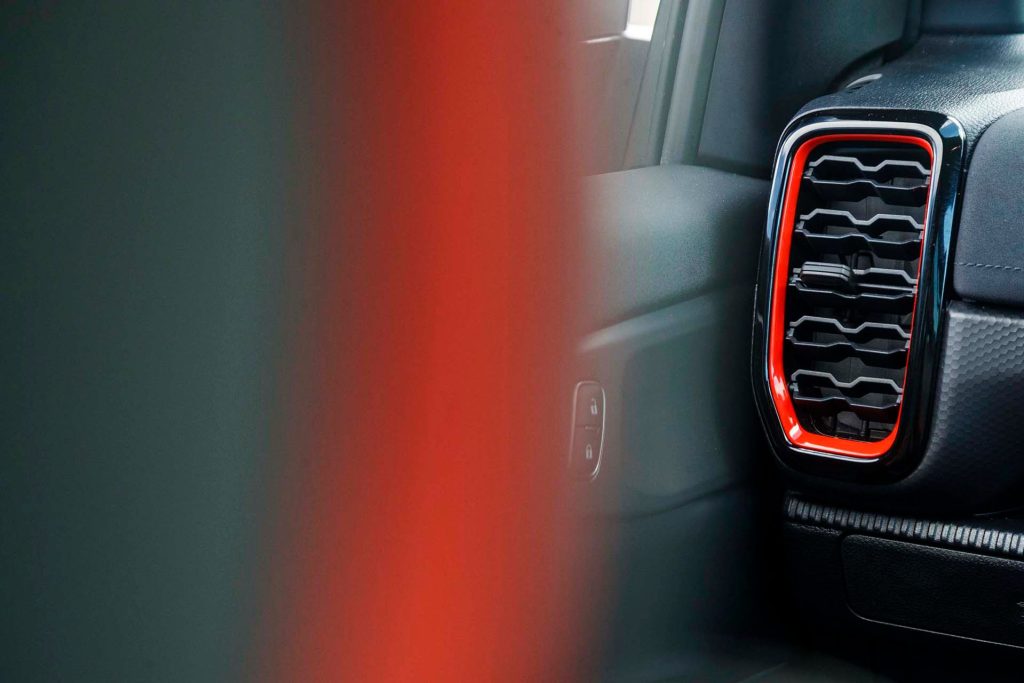
Drag truck
For feats of outright stonk, the Raptor turns in a six second 0-100km/h time, more than four seconds quicker than the old oiler. It’s much quicker 80-120 too, knocking it out in under four seconds where the diesel took 7.8sec. It’d be quicker still if it launched harder but it’s just off boost when it takes off, so requires a half second to really hit its straps. However, it’s about the only time the boosted six feels laggy, as the auto otherwise has the best gear ready to extract the goods. The shove is on from 2000rpm and it’s really hauling from 3000rpm onward. The midrange is its thing but it has meat up top too which has you seeking the redline out every now and again.
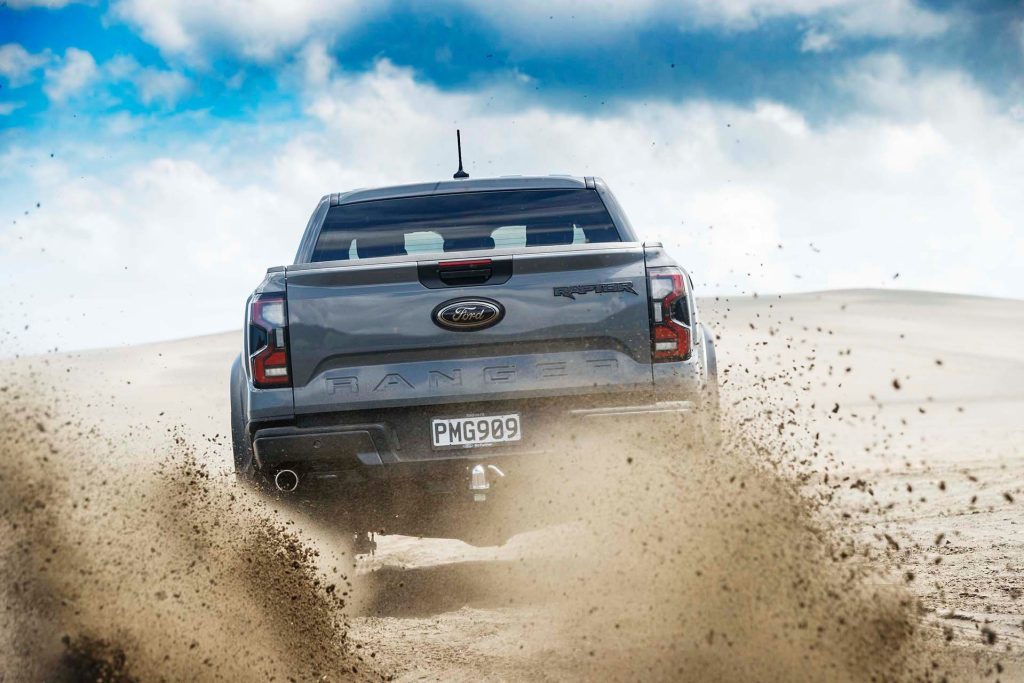
The fuel use is the wrong side of awful, however, the figures enough to have a climate protester lobbing their gazpacho at a Goldie. Where the old 2.0 was good for around the 11L/100km mark, this thing is in the 18L/100km range (depending how often you make those pipes sing), and peaked at 25L/100km.
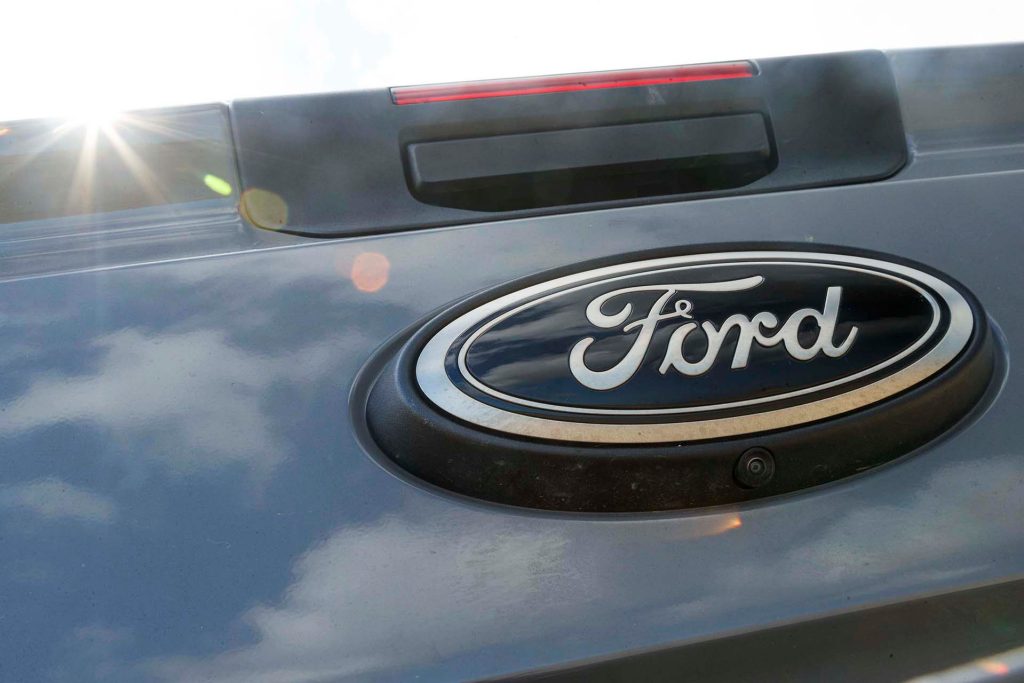
Mind the dotterels please
Raptor really romps off road. Select the right mode (Sand or Baja), and the engine is kept in the torque band, the stability systems are primed for fun and the suspension is set to its most compliant (yet still controlled) setting. And in Baja, the antilag system crackles away. It’s the control over the bumps, especially of the nasty, short frequency variety, that impresses; there’s very little pitching and diving. It soaks them all up while dealing deftly with the big humps. Those Fox shocks really shine when landing a jump. They are tuned to provide maximum damping force during the last 25 per cent of their travel and so they diffuse the impact of the real testing hits, while the control via the rebound is equally deft, recovering its composure immediately and ready for the next test.
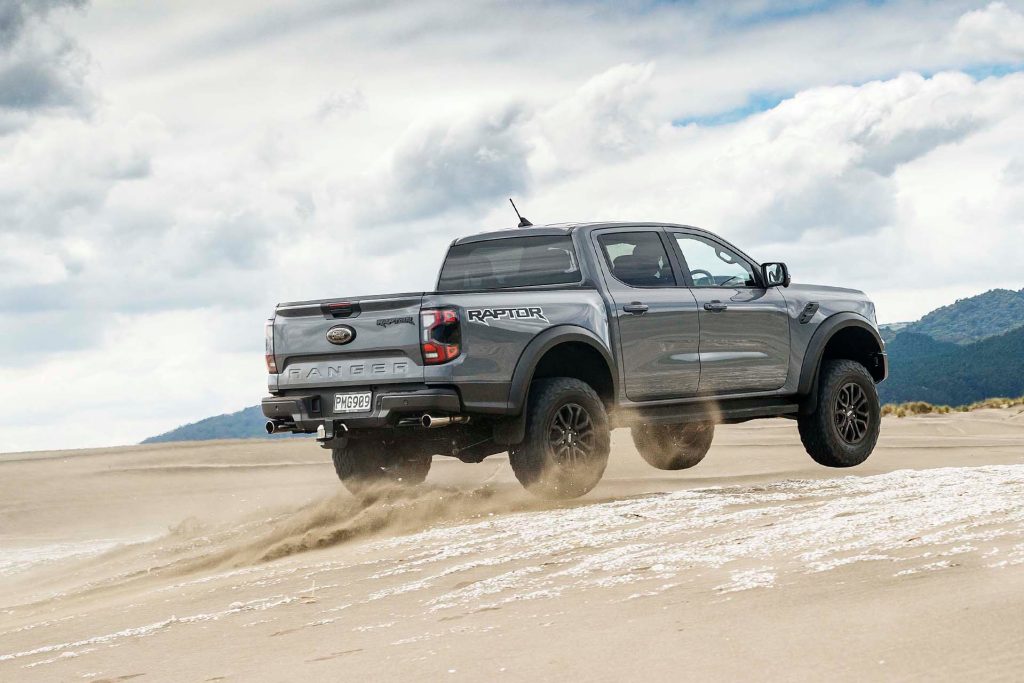
Civil in the city?
Raptor’s surreal ride quality (for a ute that is) returns, those big shockers, tyres and coil springs all combining to soothe the bumps away. It’s settled over all road anomalies while it eats up speed humps.
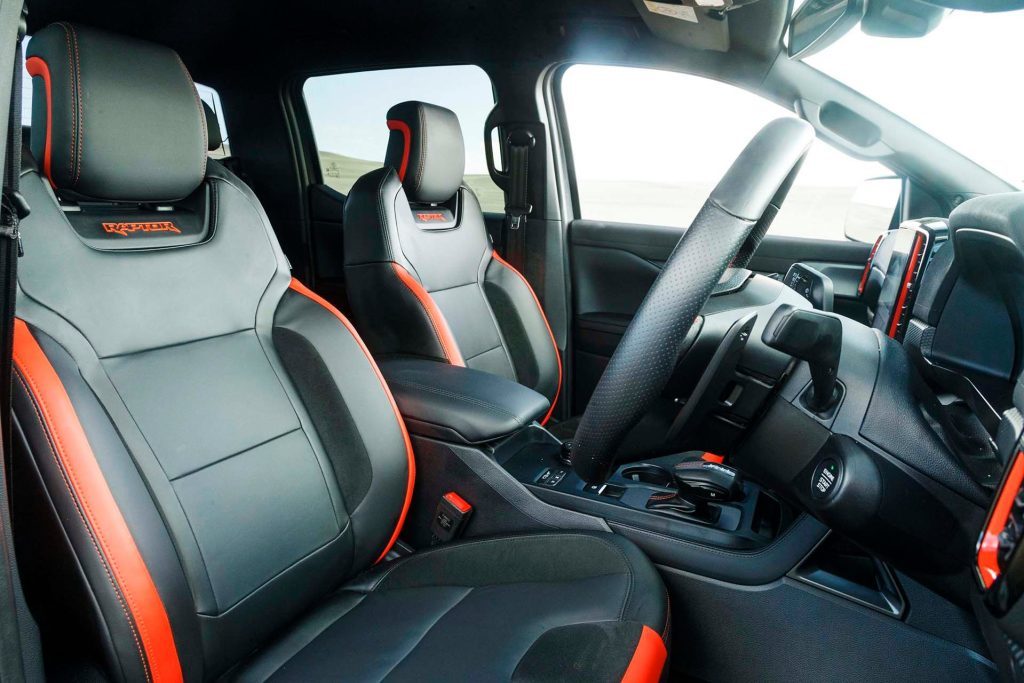
With its 3.0-litre V6, there’s not much in the way of turbo lag in everyday running, though if you boot it, there’s a real surge around the 2500rpm mark as the boost fully fattens the torque curve, and this lunges on forward. The ten-speed auto is both swift and smooth on the swaps, hooking up taller gears to ease consumption. But then it doesn’t need much encouragement to kick down.
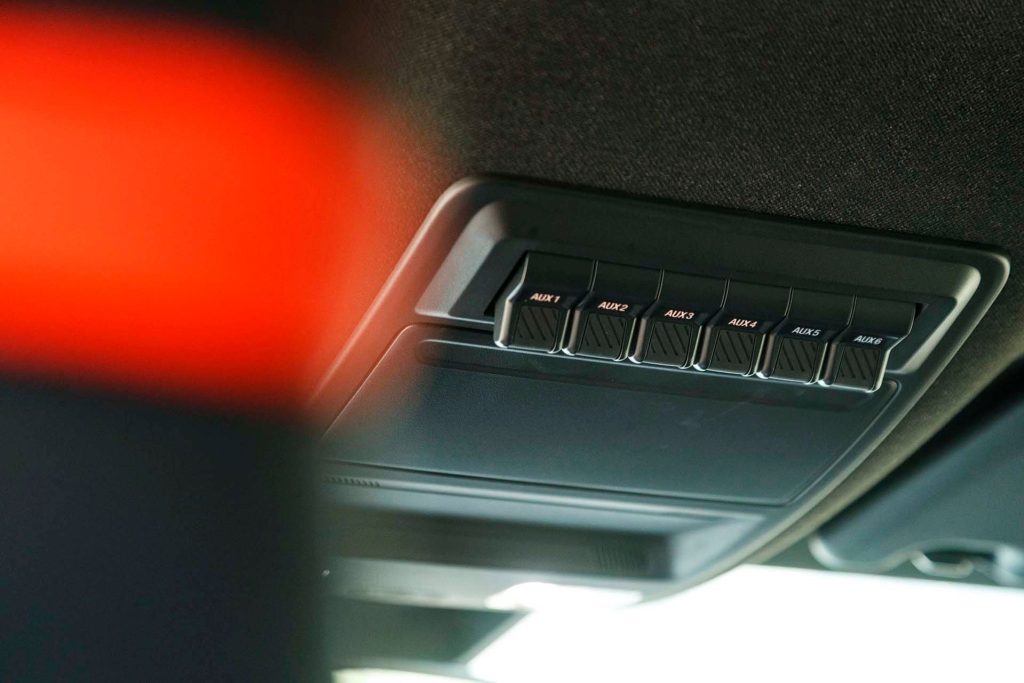
Unlike the previous model, this has all the safety features loaded, including AEB and active cruise, the latter helping take care of grinding traffic flows. It has lane keeping too, which likes to keep you centred so that can be mildly annoying.
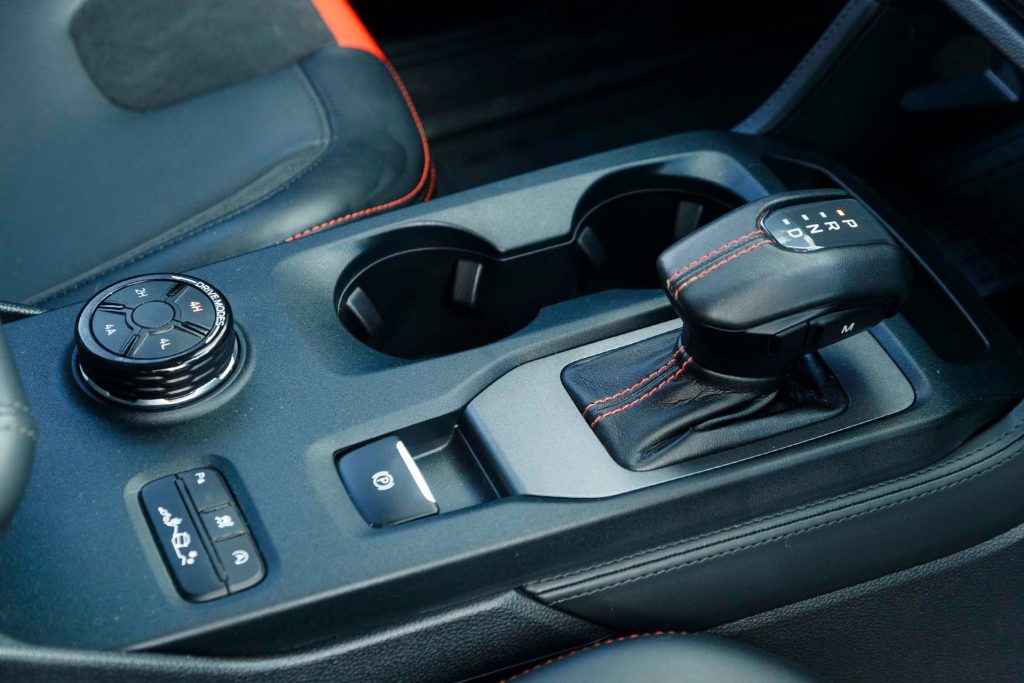
The steering always has a reasonable heft to its operation, even in the ‘Comfort’ setting, while the turning circle remains a challenge in the car park, often requiring a second cut to line you up. And being that much wider, it tends to take up all the available space, making getting out that much harder. But the new surround view camera helps.
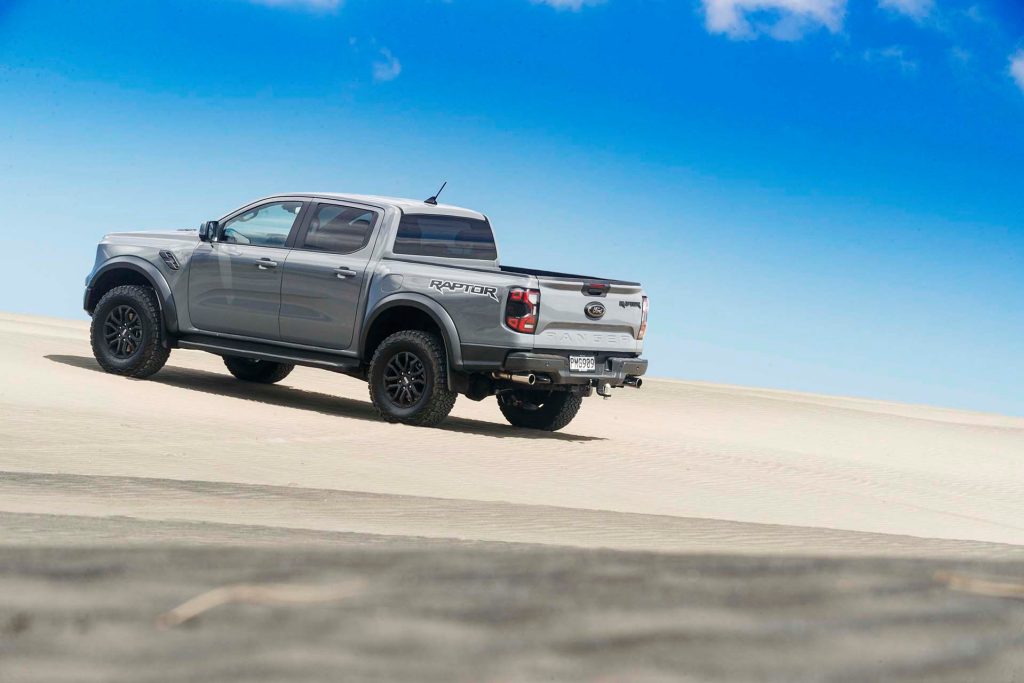
While it’s a desert racer, if you’re more the type that races to the kitchen for dessert, the driver’s seat is suitably accommodating, wide with decent side bolstering, if a little firm under the buns. The added ride height makes it a little more of a stretch to get in, and so those running boards come in handy.
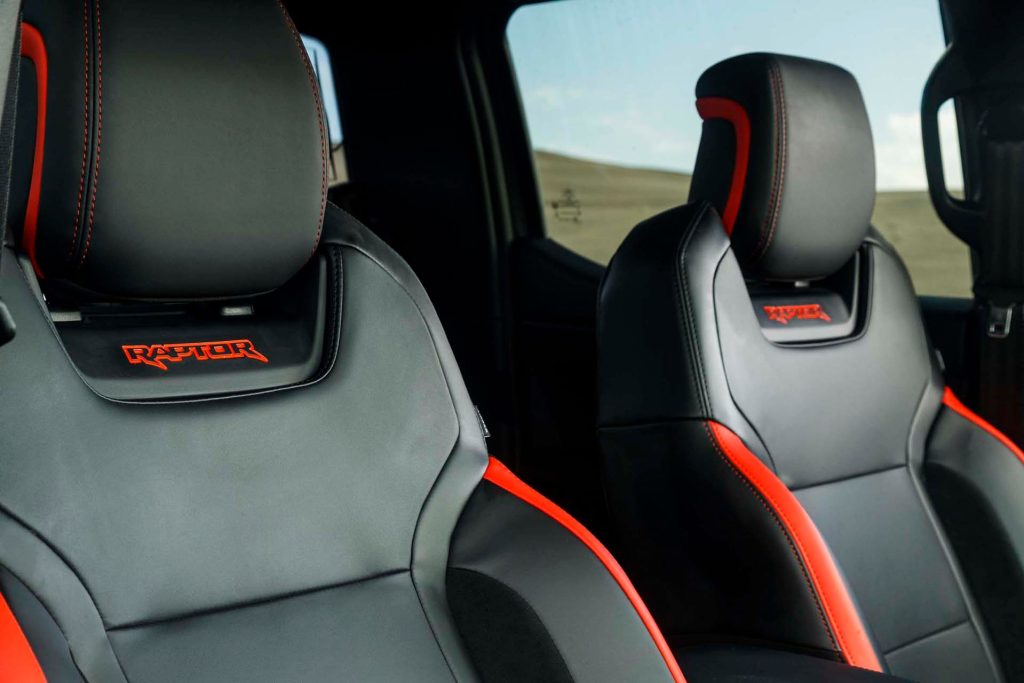
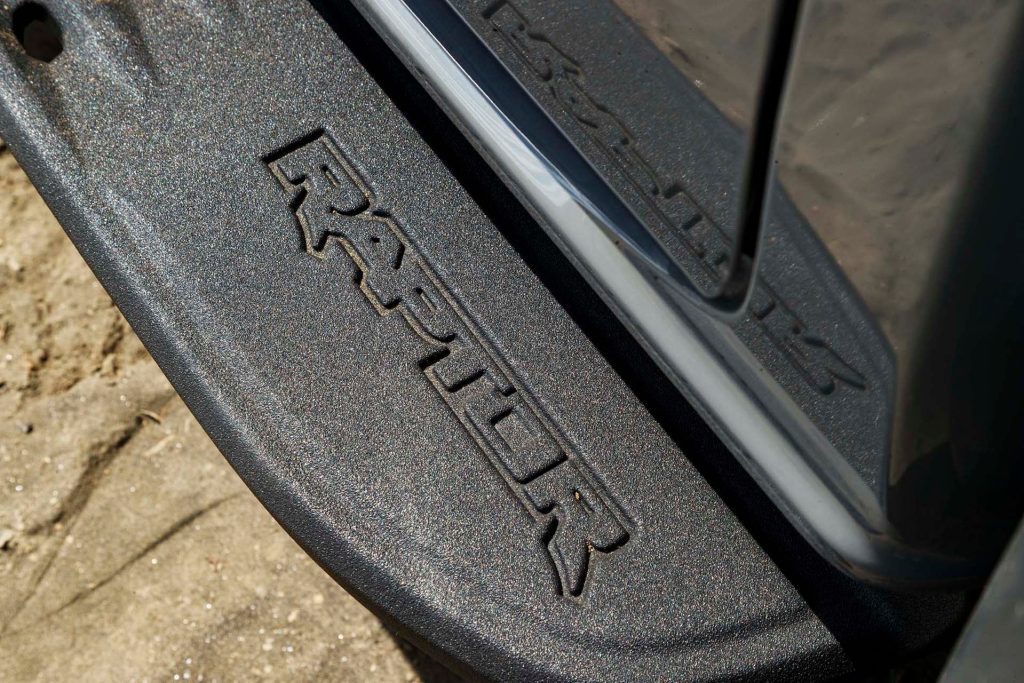
Worth it?
Given its talents and extra performance, the $10,500 premium over the V6 Wildtrak seems fair, cheap even for the sum of its unique parts. It’s great to drive both on- and off-road, goes hard and sounds impressive. Yet it’s civilised enough for the school run and, though down on capability, is still practical. It’s horrendously thirsty and reminds of XR8s of the past in the way you were forever filling up. Back then it cost $60 to gas up; this Raptor is more like $260. You’ve been warned.
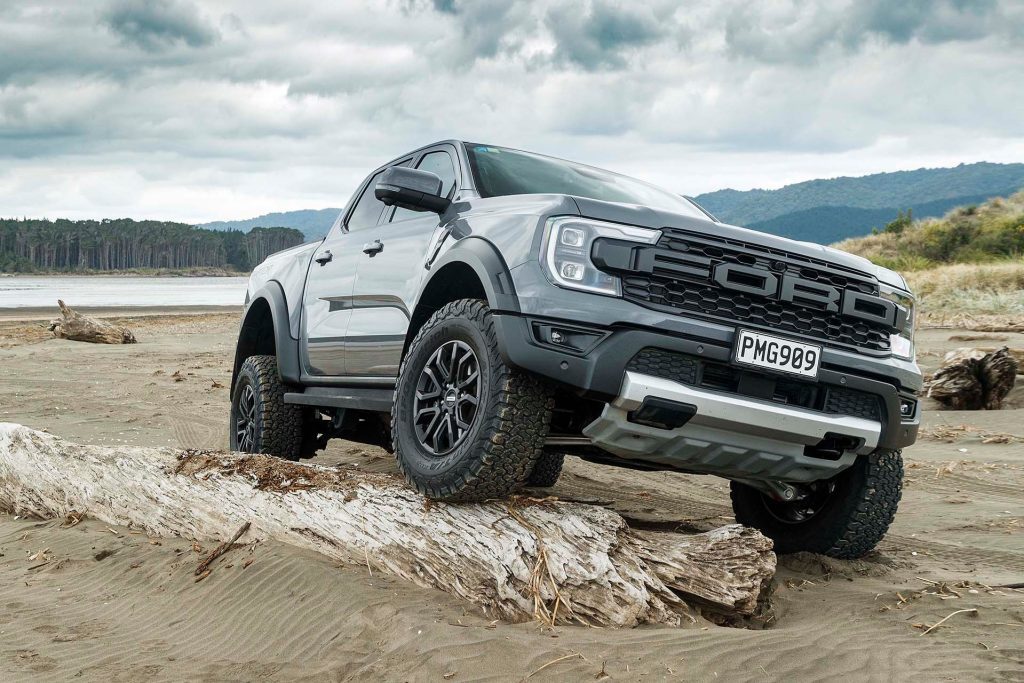
| Model | Ford Ranger Raptor |
| Price | $92,990 |
| Clean Car Discount | Fee + $5175 |
| Engine | 2956cc, V6, T, DI |
| Power/Torque | 292kW/583Nm |
| Drivetrain | 10-speed auto, on-demand AWD |
| Fuel Use | 12.8L/100km |
| C02 Output | 292g/km |
| 0-100km/h | 6.03sec |
| 80-120km/h | 3.90sec (110m) |
| 100-0km/h | 42.35m |
| Stability systems | ABS, ESP |
| Safety | AEB, ACC, BSM, LDW, RCTA, ALK, AHB |
| Tow rating | 750kg (2500kg braked) |
| Service intervals | variable |
| Warranty | 5 years/150,000km |
| ANCAP rating | not yet rated |
| Weight | 2475kg (claimed) |





